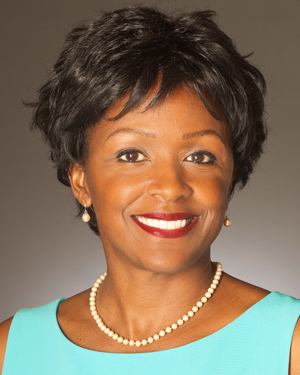It’s About Time, It’s About Space…

In January 2011, I became the 76th president of the Boston Society of Architects. When I first received Tim Love FAIA’s phone call in early 2009 informing me that I’d been nominated to run for the position, I’d just launched my own architectural practice several months earlier, and my initial thought was that perhaps I needed to dedicate all my waking hours to that. He said, “Before you say no—“ and then gave me a bit of a speech about how it really wouldn’t be much work, followed by Richard Fitzgerald’s Ronald Reagan and Jimmy Carter presidency-style analogy, which we’d all heard.
Admittedly, I, too, had no kindergarten papers expressing my deepest desire to be president; however, before I knew it, I had accepted the Nomination Committee’s recommendation and agreed to run.
By the time January 2011 rolled around, Richard had already retired, and I found myself at a specific place in time where seemingly everything was on the table—open and up for reexamination—a moment when brass-tacks decisions had to be made that would ultimately redefine the BSA culture.
Amidst many varied initiatives, we unexpectedly found ourselves searching for the second executive director in less than 18 months, a setback that no one had foreseen. There were so many moving pieces, major events, and changes going on at the BSA during that time, and between the Client Committee (whose role was overseeing the design and construction of the new office space), the Art Committee, Branding Committee, board of directors meetings, Executive Committee, Executive Director Search Committee, Finance Committee, discussions of transforming Build Boston to ABX, and several other events, I’d attended more than 200 meetings at the BSA that year alone—perhaps more than I’d attended with my own clients! I’m not sure which U.S. presidential model I’d inadvertently adapted, but thankfully, “it wasn’t really that much work!”
To top things off, the housing market had collapsed, and we were in the throes of the worst economic recession since the Great Depression.
Then there was the story of moving from 52 Broad Street to Atlantic Wharf and the discourse of the BSA’s culture and how it might, thereby, be affected. Although the hard decision to sell the beloved building that many had worked so hard to obtain 20 years earlier and move to a place more open, visible, and engaging had already been made following several years of discussion by members, friends, and other interested parties, not everyone was on board with the idea of moving—at least not initially! But the wheels were now turning in full gear, and many dedicated members and allies in the BSA community volunteered their time and talent, working together to help make it successful. Höweler + Yoon had won the competition to design the BSA’s new space and worked closely with the Client Committee, which comprised mostly architects.

In the meantime, the economic recession roared on, and we all reflected on the recession of the 1990s as a forewarning--a time when a large number of our colleagues left the profession, resulting in a “missing generation of midlevel architects.” We were determined not to let that happen again, and among many efforts, the BSA organized training sessions in Revit and other initiatives while established firms offered what they could. At a brainstorming session held at Shepley Bulfinch’s office, I recall Charles Tseckares FAIA and others offering space in their offices and the use of computers to anyone who needed it. The goal of getting more young people employed and involved was a recurring theme at practically every BSA discussion since I can remember.
By the end of the year (which seemed like five), the new BSA Space had opened at Atlantic Wharf; the first art installation by pinkcomma gallery was installed; a new executive director, Margaret Wigglesworth, had been selected; and it was time to hand off the baton to the next president to commence what was referred to as “the year of the party!” Upon reflection, perhaps time stood still for a few moments.
Although ultimately former executive directors Margaret Wigglesworth’s and Tom Keane Hon. BSA’s time served may have been much shorter than we’d all imagined, I think of them as change makers, or catalysts, because each helped move the ball further along than it had been before. And we still celebrate the heroic efforts of the BSA staff who provided unbelievable continuity and stability along the way and during the interim.
During the annual Past Presidents luncheon in January (2017), Brian Healy mentioned as a side note that “young people see the BSA as a place to go and meet people.” That was, indeed, music to our ears and a testament to all who contributed to the collective efforts over the years to carry out such a large and important shift toward an open, transparent, and engaging organization. Perhaps it’s getting back to the very roots of the BSA, where its strength lies in its social aspects, as it has been since it was founded 150 years ago.
Being part of the BSA is being engaged in a community of extraordinary people. It is, indeed, an honor and an absolute privilege to have served as president of such an organization.
Audrey O’Hagan AIA, 2011 BSA president

